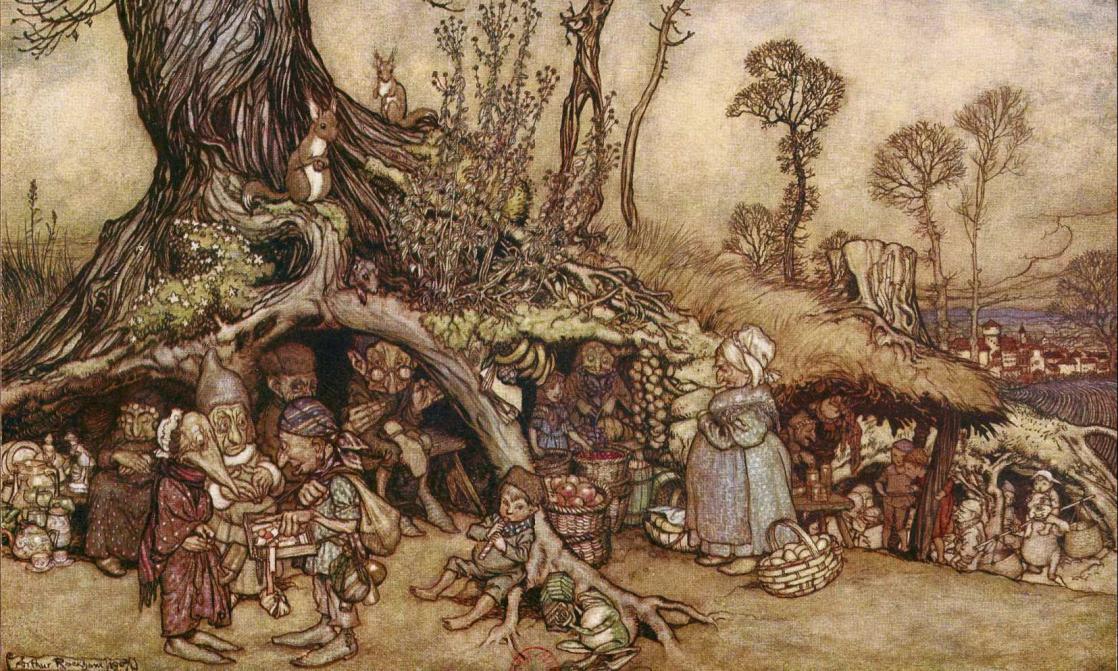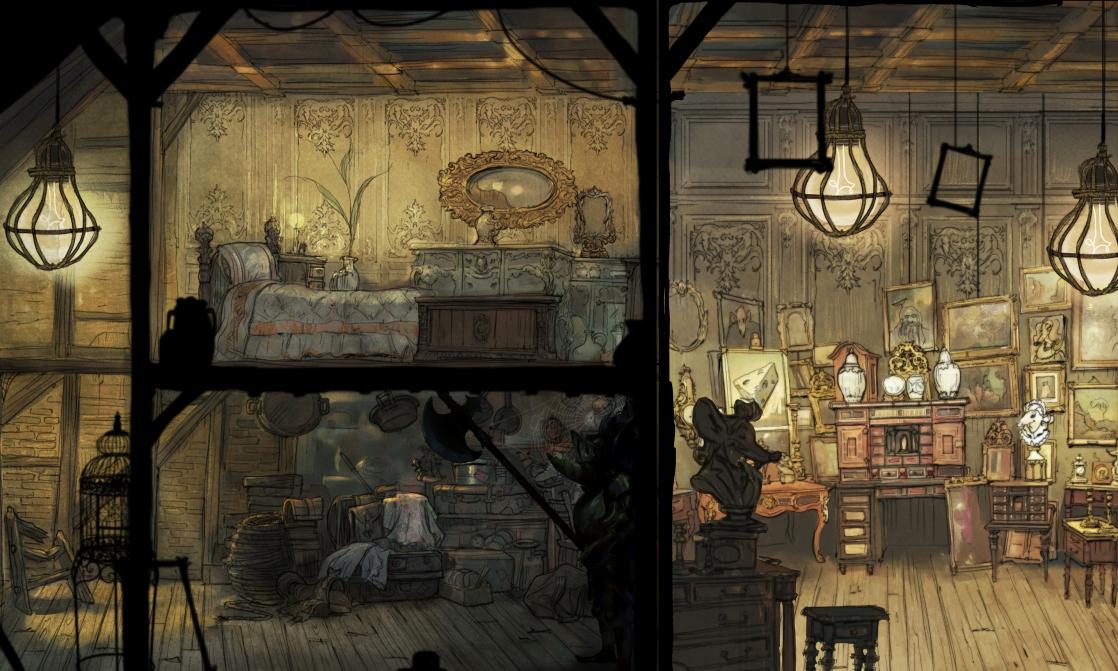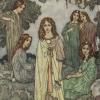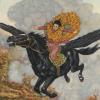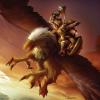“Little People” with Oversized Powers
Although their size may not be impressive, plenty of tiny fantasy creatures have left their mark on our imagination. From Tinker Bell to the Invisibles, they all remind us that here, magic trumps stature.
Little People: A “Debased” Version of Myths
They are known as the “little people:” gnomes, elves, leprechauns, goblins, and trolls. Those European folkloric creatures can be hard to tell apart sometimes, as their countless names often hide a range of shared features. Haunting the woods and moors, sometimes even houses, it can be wise to watch out for their tricks and to placate their mischievousness with small gifts and signs of respect.
Many lushly illustrated books in the style of grimoires, or books of magic spells, claim to document their existence by cataloguing the various species. In France, the “elficologist” Pierre Dubois is the best-known specialist, and in England, Brian Froud’s images have left a lasting impression on myriad readers. In works of fiction, the plot of the fanciful book series The Spiderwick Chronicles (Holly Black, Tony Di Terlizzi, 2003-2009) starts with three siblings’ discovery of just such a book. The children will go on to encounter the creatures described in the book. In a similar vein, L’Herbier des fées (“The Fairies’ Flower Press,” 2011), by Sébastien Perez and the illustrator Benjamin Lacombe, purport to share a Russian botanist’s diary that reveals the existence of little people all around us.
But why are those people said to be little? Insofar as folklore can be understood as a “debased” version of myths – Celtic and Scandinavian, in this instance – the little people are what’s left of the ancient sprites we no longer believe in; the last vestiges of the animist relationship to nature that escaped Christianization and modernity.
Contested Miniaturization
Medieval fairies and elves were as tall as humans, and their stories often refer to bonds of love between them and representatives of our own species who were drawn to their realm. In J.R.R. Tolkien’s work, those same elves are big and noble, and even the dwarves, goblins and trolls stand tall. Nothing like the dwarves in Snow White and the Seven Dwarves (Disney, 1937), the house elves or goblins that operate Gringotts Wizarding Bank in Harry Potter (J.K. Rowling, 1997-2007), or the colorfully-maned Trolls that have become popular with children thanks to toys and an animated film (Dreamworks, 2016).
Tolkien vehemently protested against that miniaturization, which was so beloved of Victorian England (one of Queen Victoria’s nicknames was “The Faerie Queen”), and which Shakespeare was one of the key inspirations for, with Mustardseed, Peaseblossom, Cobweb and Moth, Titania’s attendants in A Midsummer’s Night Dream (1594-1595).
Little fairies with delicate dragonfly wings flourished in James Matthew Barrie’s time. He established their image in our minds with Tinker Bell (Peter Pan, 1904). The fad stretched into the early twentieth century, with the 1917 Cottingley Fairies case, in which two girls aged sixteen and nine claimed to have photographed fairies, and with Cicely Mary Barker’s famous illustrations of Flower Fairies, each one matched with its own flower. Closer to home, the adventures of the fairies from the Land of Magic in the Italian cartoon Winx Club (Iginio Straffi, since 2004) are still attracting young fans to fairies.
People Beloved by All
Fantasy for children has offered numerous variations on the theme of tiny people. The little world of the Borrowers, invented by Mary Norton in her novel The Borrowers (1952), has been brought to the screen more than once, including, most notably, in Arrietty the Borrower (Studio Ghibli, 2010). In 2006, Timothée de Fombelle invented a tree-world for his Tobie Alone; and, the same year, Luc Besson came up with the Invisibles at the bottom of the garden (Arthur and the Invisibles).
Pursuing Tolkien’s struggle against the excessively cloying, Philip Pullman’s Gallivespians are brooding, 6-inch-tall warriors with deadly spurs in The Amber Mirror (His Dark Materials, Volume 3, 2000). Terry Pratchett chose to exploit gnomes’ comic potential and limited perspectives in his Nome trilogy (1989-1990) or their irascible rowdiness with the Nac Mac Feegles in The Wee Free Men (2003).
In the meantime, fairies are finally able to embody reflections both profound and droll on the loss of enchantment in our day and age, in books that imagine them as having survived into the present day (The Good Fairies of New York, Martin Millar, 1992), or near future (En revenir aux fees (“Getting Back to Fairies”), Nathalie Dau, 2015; Techno Faerie, Sara Doke, 2016).
